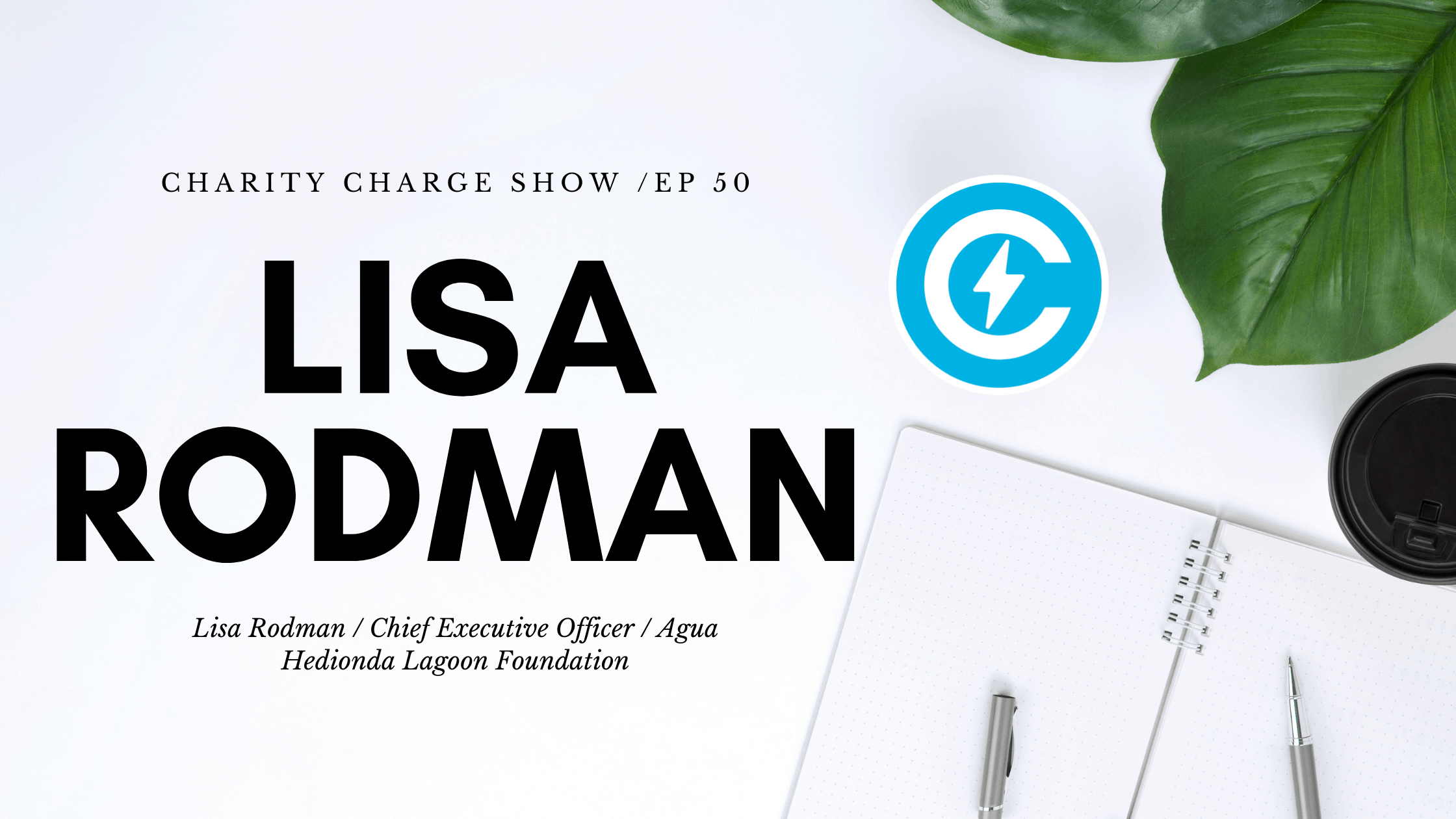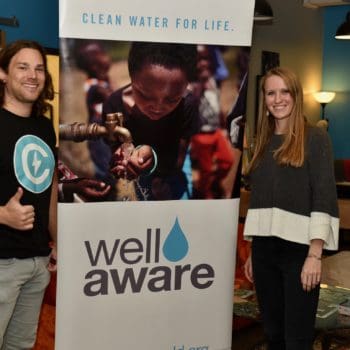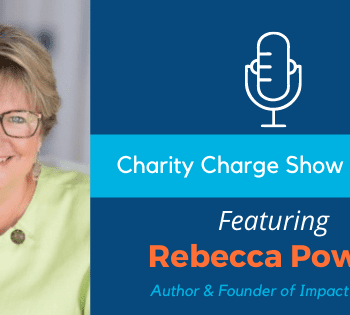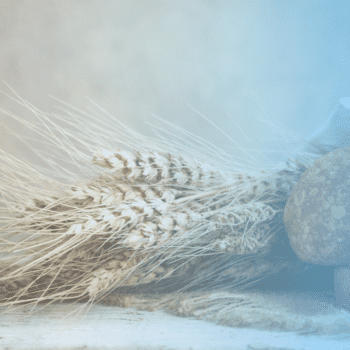In episode 50 of the Charity Charge Show, Stephen interviews Lisa Rodman, CEO of Agua Hedionda Lagoon Foundation. Lisa Rodman has been a part of the Agua Hedionda Lagoon Foundation team for 10 years. The Agua Hedionda Lagoon Foundation is located in Southern California and the focus of their work is the preservation of Agua Hedionda Lagoon. Their mission is achieved through education and outreach programs which show just how beautiful and valuable the 400-acre lagoon really is. In this episode of the Charity Charge Show, Stephen and Lisa discuss the history of Agua Hedionda Lagoon Foundation, how to cope with the challenges that COVID brought into the workplace, how to continue moving forward and so much more.
Do you go by Executive Director or CEO? And can you tell me a bit of why in running a nonprofit organization, you use that title?
Well, one year, there was no money to give raises. And I always like to move the needle for everybody, not just myself, but for anybody that we’re working with here. We had looked into the background of what a CEO does, and the CEO is responsible for all the contracts and the decisions and reporting to the board of directors. And that’s kind of the model that we have here at Agua Hedionda since I’ve been on board. So, CEO is a little sexier than Executive Director.
Can you share briefly, your mission and the work that you’re doing with Agua Hedionda?
Sure. So a bunch of passionate people in Carlsbad in 1990 started the Agua Hedionda Lagoon Foundation based on the fact that they saw development happening on the lagoon, and they loved their water. And even though this bit of water is more complex than most that you will find along the coast, they were concerned that because there was housing and condos being built that the people would not have access to the lagoon that they love. So our mission is to inspire people to engage and be responsible with Agua Hedionda, the watershed. And we do that through hands on education. And we run that through mainly families that have school aged kids, and we have this incredible school program that is really way past our little North County borders, but all into San Diego. So we’re very proud of that.
IANA is celebrating 30 years. And we are 16 years as a nature centre. Our nature centre has a cool recycling building component to it. We have a community here that’s in the Southland of Carlsbad, and it is called Avera. It had planned homes, many, many different subdivisions within there. So, our building is the retail office of the planned community of all the air. They have a school named after them (all their elementary or middle)– just kind of giving you how large of an area that we’re talking about. And the builder offered the building to the HOA of the whole complex of Avia. And they said, “We have no place for it. We don’t have any vision for it.” The chairman here at the time, his name was Bob Richards, he said we’ll take the building. And he worked with the city and they cut the building in thirds, and they put it on flatbeds and they trucked it across fields that it’s right now faraday is a road that comes into our centre, but at that time, it was just fields and so they literally you know, backed in this building and put it back together and then put it back together. They got the land donated from a local family that a lot of things are named after, called Kelly. And this place was slated to be a 711. But it turned into a nature centre. And you know that old saying, if you build it, they will come.We have had our own personal Holocaust called “Color Protects the Polio” that threatened to close the lagoon. And with that money, we were the fiscal agents, we created the native garden. The native garden, of course, brings the native habitat and all things that go with that the Florida on the critters that we love to showcase here at the Discovery Centre.
What are some of the ways that you worked to create a sense of urgency, to build even more community amongst your employees, and some ways that you all were rallying together? What are some of the initiatives that you’ve turned into doing virtual and how did you deal with that?
Well, you know, I went through all the different areas, like where you have grief, and you have anger, and you know, you blame and you have frustration, and you break down and cry, and then you come out and I use the term, ‘I pulled on my big girl panties.’ And I said, ‘Okay, we’re gonna do this.’ And it came right down to the fact that the people that I work with are absolutely 150% amazing that there isn’t one of them that I could trade out. And when I looked at how much money we had in our coffers, we had less than three months. And we were basically shutting down 80% of our business. It was before they were offering any loans and PPPs and all that stuff. And I just I looked at my husband, Terry, who is always by my side, 39 years, I got so lucky to have such a partner. And I said, ‘I’m not willing to make choices of them or me. It’s us. And that is how I’m going to move forward and figure out a path.’ I was honest with them and let them know where we were and where we stood.
And together as a group, we decided how we were going to move forward. We started every day with how you how they were feeling. We were touching base, first as individuals, and what was affecting them personally, in the business and in their spiritual realm.
We spent a good amount of time with the four of us doing that we had all been through the week before laying off the teachers, because the school program had been shut down. So we were really aware of the emotion that you feel when good people are being let go, because there isn’t anything. And we were all very committed. As a matter of fact, I don’t think that we’ve worked any harder. I mean, we’ve worked less hard. During COVID, people were collecting, their paychecks and sitting at home, and we were really working hard seven days a week. And it shows because we are still relevant to our community, and are getting engagements, even past those borders based on the virtual world that is now a reality based on COVID. And so one of our building blocks, besides making a revenue stream and staying relevant was what we do, let’s make it be more than just for COVID-19. Because that is going to end, it might not be for another year, maybe two years. But at some point, you know, everybody will be in this back to normal, whatever normal is now. And I wanted our initiatives to be better than that. And then I wanted them to serve people– the people that are stuck at home that can’t get anything except for something on their screen. And so we created everything with that mindset. Then we just kind of broke it down into these different initiatives. One that I liked the most, was that it costs nothing, and anybody can do it. But it’s a good marketing tool.
So if anybody is listening, is in your sector, in your industry, whatever it is that you’re getting bombarded with. And you know, when COVID started, like the emails were flying, and people were also scrambling to figure out what to do. I realized that there was a lot of different nature initiatives that were happening. And I said, well, wouldn’t be great if we just like, put them all into one page with all their links. No judgement, no, you know, decision making just its nature, you want to get to nature, here we have your link, your one stop shop. And that helped us not only see what everybody was doing and fill in holes, but also people came to our website, they stayed on our website, because we were a place that they could go and find other things so I can keep going on all the other different initiatives.
Can you talk a bit about your virtual program, and what that acronym is? And if any teachers or parents that have kids at home are interested in getting involved, how can they be a part of that?
Sure. So we have animal ambassadors here at the lagoon. We handle and teach pet responsibility. Awesome Agua Animals was born out of the fact that we had educated 10,599 kids in our school program last year and all of a sudden that funding just shut off, nobody was coming out. They were all home being safe, and how do we get some experience to them? That was relevant.
The animals being such great ambassadors was our first road into the classroom. And we probably started out three weeks, maybe four weeks right after the shutdown on March 13. And it’s a 30 minute program, that somebody just like you, Stephen said, “Let’s just try it and see what happens.” And so we said, donations only, you know, we didn’t want to monetize it, whatever you feel it’s worth, let’s help the kids feel like they’re having a taste of nature. And what we found out was, the kids were getting this taste of nature in a different way, then the ones that were having trouble trying to get into the virtual classroom. We’re now excited because there were animals on their computer screen and not the ABCs and things like that. So it had a definite up tick. That was very cool. We took donations from $5 to $100. The average gift turned out to be $30. From that, I now had an idea that 30 minutes and $30 was kind of the going rate, I filled out an application for the local college here that’s doing their senior project. So Cal State University, Sam Marcus, I took our whole virtual packages.
We did that for a little local city council campaign thing. And we had the pig pop in and to their their gala in the box, it was pretty cute. They were all what what is this? Nothing like animals to bring people together no matter what their politics are. Anyway, so we got picked up by this school. And so now we get 750 hours of seniors in business that are going to look at our virtual offerings, and rank them and monetize them or not. And give us a marketing plan. So that we can grow past North County and we can have birthday parties in Hawaii and over there in Maryland and and people can enjoy Agua Hedionda in a different country, we just have to figure out the timing of it. So we’re very pleased that that is happening, in tandem with all the sad things that COVID has with it. We’ve had some good, really neat initiatives that have come in.
Agua Hedionda Lagoon Podcast





